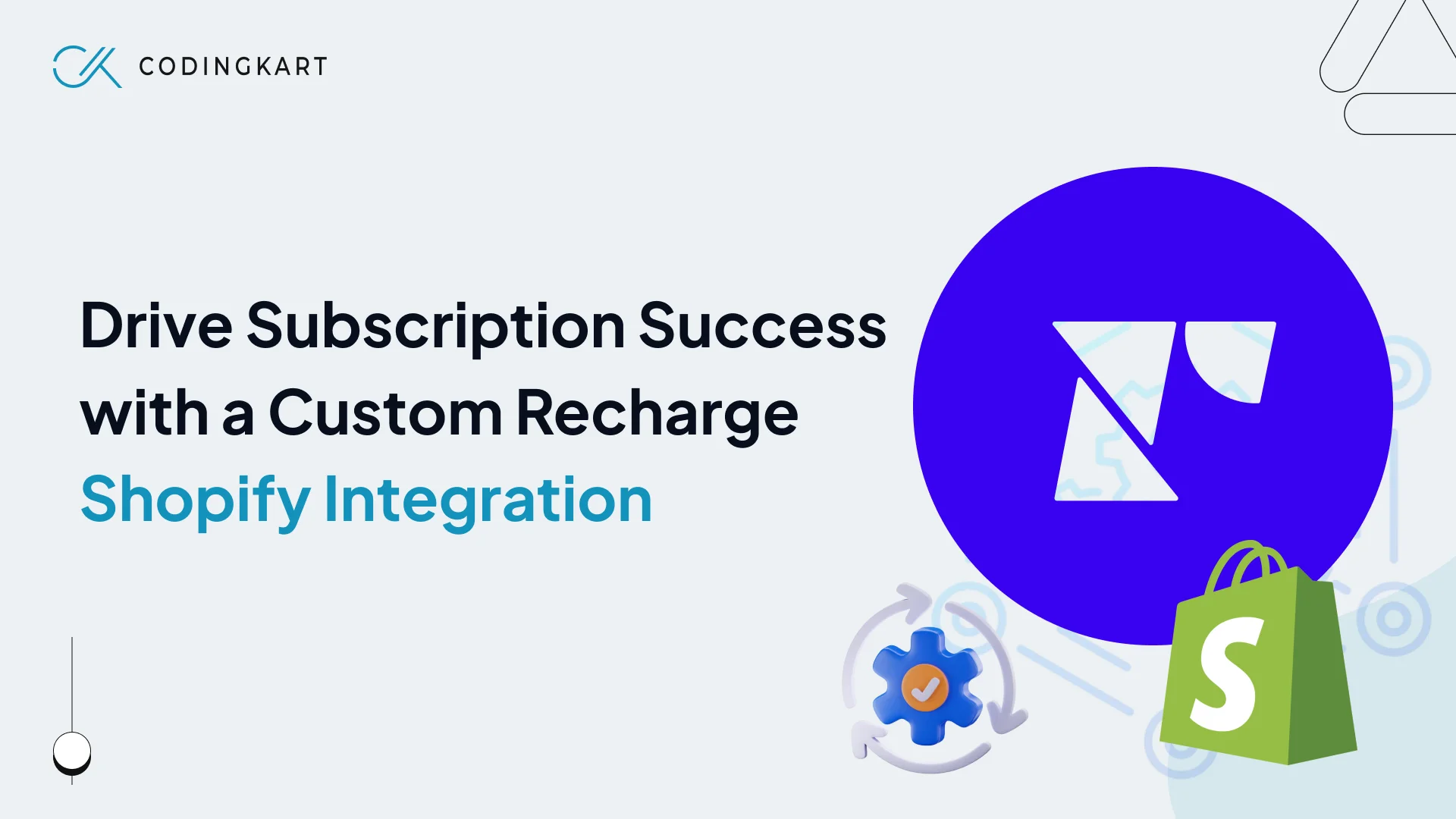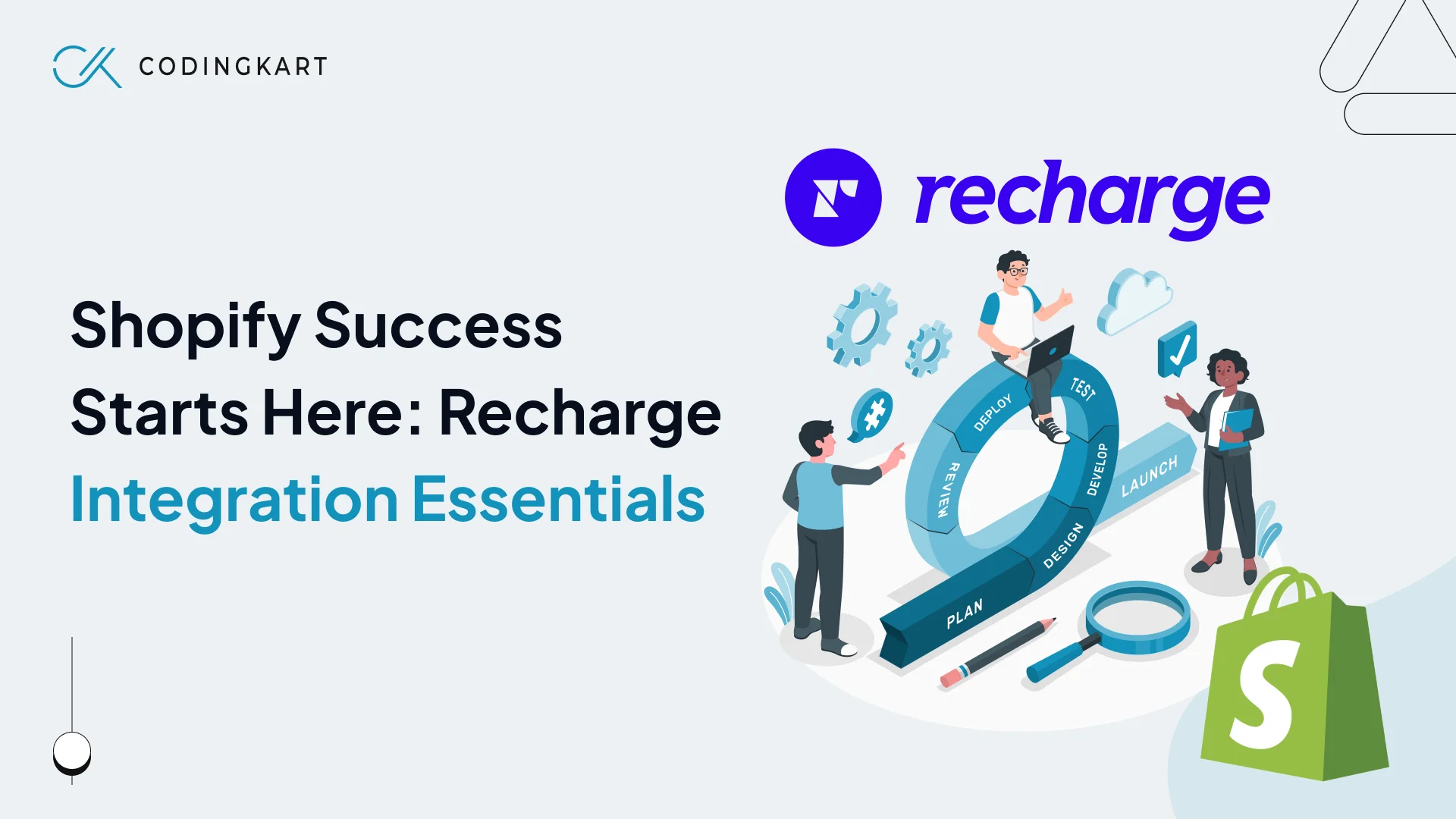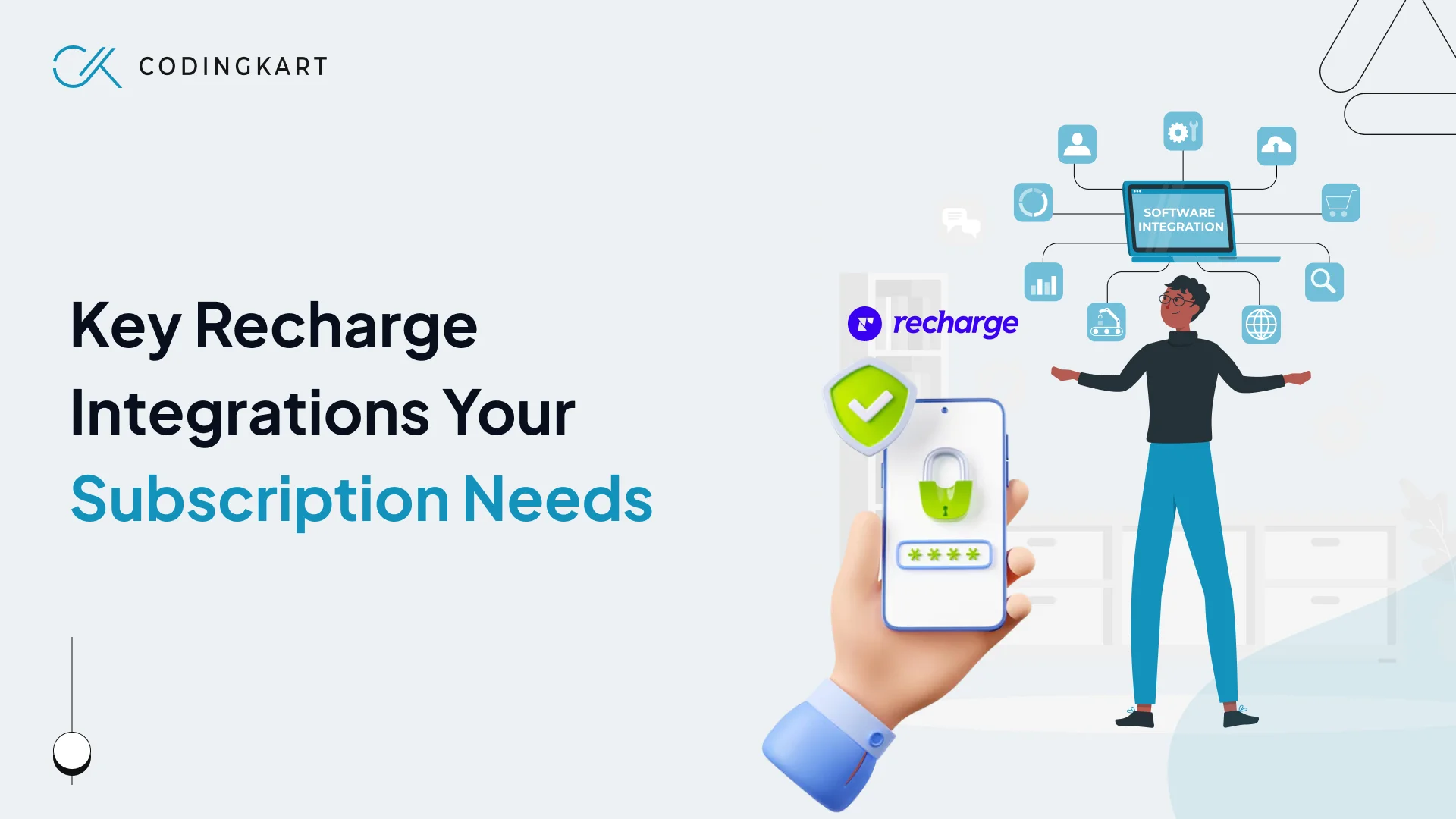June 25, 202510 min read

Get in touch with our team to discuss your Shopify development needs.
Lets TalkIn this competitive Direct-to-consumer landscape, building subscription-based products is not just a need — it has become a must-have strategy to drive recurring revenue, increase customer retention, and build long-term brand presence.
When it comes to installing RECHARGE on your Shopify platform, it is just a first step.
To fully harness its power, Shopify brands must consider Recharge customization.
If you are a Shopify merchant aiming to grow your business at a large scale, custom recharge development is key, enabling flexible workflows, APIs, and integrations that support your product setup and retention strategy.
While the recharge Shopify integration is robust, real value is generated when you switch to advanced customization. With Recharge subscription customization on Shopify, merchants are developing automated systems to scale their brand.
In fast-paced regions like NewYork, Recharge customization is not an option; it’s your winning edge to stay ahead.

Subscription commerce has seen a huge growth from evolution to essentiality for Shopify merchants. That’s where a Recharge Shopify integration plays a key role in creating and delivering subscription experiences.
Here’s what Shopify merchants need to know to make the most of Recharge.
With Recharge Shopify integration, you connect your Shopify store with a subscription platform that enables subscription billing and its management.
It allows you to deliver recurring products, automate billing systems, and provide your customers with complete control over their subscriptions without being redirected to a separate platform, thereby enhancing user experience and overall convenience of shopping.
For store owners, the subscription model offers a straightforward setup that drives effortless scalability and business growth.
While the default configuration works, it is not enough sometimes. Customizing Recharge subscriptions lets you develop workflows that match your product, customer expectations, and establish brand identity
With Recharge subscription customization on Shopify, merchants can:
Recharge customization provides brands the adaptability to personalize the subscription experience and give their customers a reason to shop.
To get the most out of the Recharge subscription, merchants must take advantage of Recharge integration that works well with their subscription setup
Here are the key tools to integrate with Recharge:
These integrations simplify and automate tasks and help improve retention on the basis of buyer behavior patterns and their ease of communication.
There is no denying that buyers, when shopping online, expect a flexible shopping experience. With Recharge, they gain complete control— pause, swap, skip, or cancel, from the customer portal itself. From a merchant’s perspective, this is important as this ensures easier control over orders, reduces churn, and builds loyalty.
Recharge subscription customization here lets you customize these features in a way that lines up with your retention strategy.
Shopify merchants intend to grow their online business, Recharge API offers tremendous value. It allows third-party integrations, custom workflows, and streamlined automation that drive efficiency.
Recharge APIs can be considered to:
Recharge comprises built-in analytics to track metrics such as:
Recharge’s customization and Shopify’s design adaptability let merchants build a full-fledged brand subscription experience. Right from customers picking a subscription product to how they receive consistent deliveries, to how a brand keeps them retained over time through personalized experiences, every interaction can be fine-tuned with Recharge Shopify integration.
Setting up Recharge is a great initial step, but relying on the default setup means you are missing out on retention growth and leaving substantial revenue. The out-of-the-box recharge configuration reveals only a fraction of Recharge’s full potential.
Here’s what merchants need to know and why customization is needed if you want to scale.
The default Recharge setup lets you configure basic subscription functionality, but it doesn’t fit unique product needs, pricing strategy, or consumer expectations. Therefore, to get the most out of Recharge, the best recharge customization from a Shopify agency is essential.
You need Recharge customization to:
With no customization, customers are being served with a generic experience, and that may reduce retention.
The Recharge API allows developers to go far beyond the UI, which gives you control over how subscriptions work, data flows, and customers interact with your platform.
With the API, you can:
Not leveraging the Recharge API means you are limited to basic features, while your competitors are offering a better buyer experience.
Seeking to automate tasks like sending alert notifications to your fulfillment center when a subscription renews, or triggering a personalized email to customers after their third renewal.
That’s what Recharge webhooks do. Webhooks enhance automation capabilities to your store, allowing you to:
Without webhooks, you miss out on automation capabilities, leading to reduced operational efficiencies.
Consumers today seek convenience and a hassle-free shopping experience. If your customer does not have the flexibility to pause, skip, or edit subscriptions, or if they feel disconnected while using the subscription portal, it will lead to churn.
The best Recharge customization facilitates:
With no customization, your brand experience suffers, and your subscription revenue declines
The recharge Shopify integration is effective, but only when it is implemented with a strategy such as:
Merchants using Recharge without a strategy lead to high churn, short customer lifespan, and low customer lifetime value (LTV).

The real effectiveness of the Recharge Shopify integration is not just about configuring subscriptions, it’s in how it is integrated with third-party tools. With Recharge Shopify integration, you can enhance customer experience, minimize churn, and open up new ways to generate revenue from the subscription model.
Here are some needful integrations every merchant should consider:
Integrating Klaviyo with Recharge lets you send timely emails depending on subscriber activity. It lets you:
This integration keeps customers occupied and minimizes churn through automated, personalized communication.
Dedicated customer service is a key aspect of retention. With the Gorgias and Recharge integration, your support team can:
A smoother support experience leads to better retention and fewer cancellations.
If you want your subscribers to remain connected with you for a long time, LoyaltyLion integrates with Recharge to offer rewards like:
This integration drives engagement and helps build brand engagement.
Analytics tools integrated into your Recharge Shopify setup let you track:
These insights help you make smarter decisions to further improve subscription performance.
Integrate affiliate tools with Recharge to:
Subscriptions grow faster when happy customers and affiliates promote your brand.
If you are serious about generating revenue through subscriptions, hiring a Recharge API developer with Shopify expertise is essential.
A Shopify-savvy Recharge API developer is the best move to develop a high-performance subscription setup.
Here’s why a Shopify Plus Recharge developer matters:
For advanced subscription functionality, a Shopify Plus Recharge API expert is essential to building a high-performing, tailored setup.
Recharge on Shopify Gets You Started, customization makes your brand scalable.
Installing Recharge is only the beginning. To truly escalate your subscription-based business, you need smart customization, API-driven workflows, and seamless integrations that align with your brand.
Codingkart, a leading Shopify Plus agency based in New York, specializes in advanced Recharge development, helping merchants turn basic setups into powerful subscription engines.
Let’s build your scalable subscription experience today.
Customizing Recharge ensures your subscription experience aligns with your brand, product model, and customer expectations. From custom billing logic to branded customer portals, customization helps improve retention, reduce churn, and scale efficiently. At Codingkart, we specialize in tailoring Recharge setups that deliver real business impact.
Yes, but it comes with limitations. The default Recharge setup offers basic features, which may not suit growing or niche Shopify stores. Without customization, you miss out on advanced workflows, integrations, and user experience improvements. Codingkart’s Shopify Plus developers can help you go beyond the basics with API-driven custom solutions.
With a skilled Recharge developer, you can:
Codingkart, a Shopify Plus agency, has deep experience in implementing these advanced customizations for merchants worldwide.
Third-party Recharge integrations like Klaviyo, Gorgias, and LoyaltyLion help automate communication, improve support, and reward loyal subscribers. These tools, when properly integrated, lead to higher retention and increased LTV. Codingkart ensures all integrations are implemented strategically for maximum ROI.
Codingkart is a certified Shopify Plus expert agency based in New York, specializing in custom Recharge development. We understand the technical and business aspects of scaling subscriptions, and we bring both together to build high-performing, fully tailored solutions for ambitious Shopify merchants.
June 25, 202510 min read
Overview: Why Recharge Customization Is a Game-Changer for Shopify Stores In this competitive Direct-to-consumer landscape, building subscription-based products is not just a need — it ...Read More
June 19, 202512 min read
Introduction to Subscription Shift in DTC Commerce In today’s evolving direct-to-consumer (DTC) landscape, one-time transactions are rapidly being replaced by long-term customer relationships powered by ...Read More
June 18, 20258 min read
Introduction: The Rise of Subscription Beauty Brands In recent years, the beauty industry has undergone a significant transformation with the rise of subscription-based business models. ...Read More